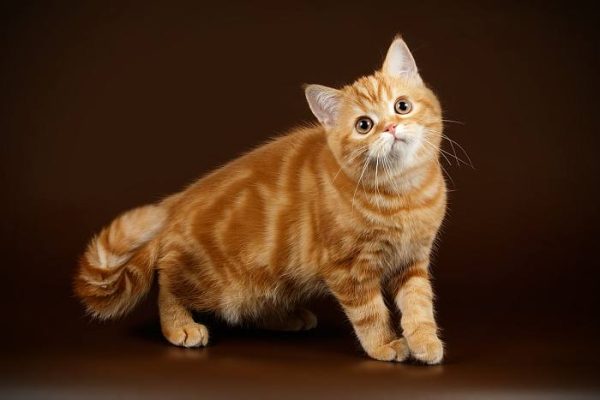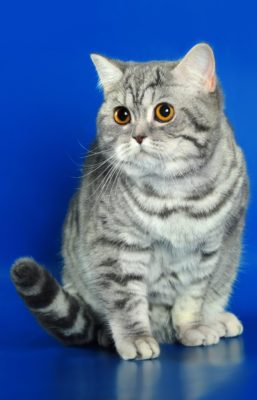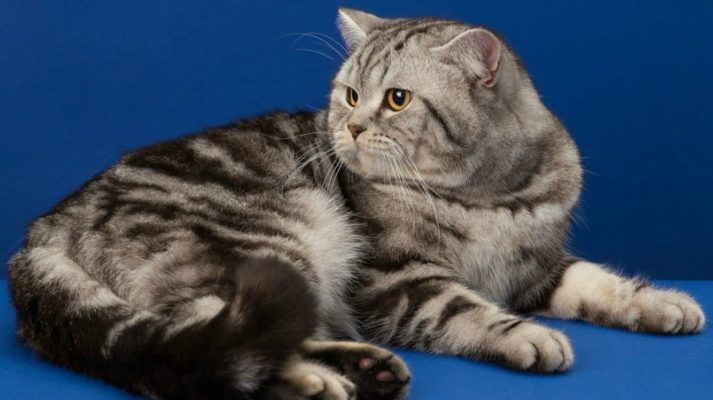Scottish Straight

The Scottish Straight can be classified as a non-aggressive cat breed. Self-sufficient can do without a master for quite a long time, not afraid of solitude, even welcomed. Strangely enough, the cat of this breed does not like to “hang out” in the arms of the owner. It prefers to sit nearby and watch what is happening in the house from the side. Scottish Straight cats are sociable in moderation, but no problem to find contact with children.
Table of Contents
Breed Information
| Origin | Scotland |
| Size | Males 27-30 cm Females 24-27 cm |
| Weight | Males 5-6 kg Females 3-5 kg |
| Fur Type | Short-haired |
| Color | All colors and coat patterns |
| Lifestyle | Outdoors, indoors |
| Lifespan | 12-15 years |
| FIFe Classification | – |
| WCF Classification | Group 3: “Short-haired” Breed designation – SFS-71 |
| TICA Classification | – |
| Group | Short-haired cats, cats for apartments (docile cats), cats for kids |
| Price | $1000-1500 |
Breed Photos
Origin History
The Scottish Straight has only been officially recognized for 15 years. It is one of the youngest breeds of cats. The Scottish Straights’ closest relatives are Scottish Folds, which can be considered older, but lop-eared brothers.
It’s all about genetics; on no account should two lop-eared cats be mated, such offspring are born non-viable. It forced breeders to think about ways of safe breeding of offspring. Experiments showed that one parent should always be straight-eared and the other lop-eared. In such a pair, healthy and robust kittens are born, half of which are Scottish Folds, and the other half are Scottish Straights.
Appearance
The body of the Scottish Straight is of medium length, with a well-proportioned and dense torso. Paws are short but strong, the tail is mobile, which allows the Scottish Straight to move easily and plastically. The eyes are round and large, usually matching the color of the coat.
The head is round, the forehead is convex, the cheeks are full, but the chin is strong-willed. The ears are straight with the tips apart; they are erect, high, and wide-set.
There is an opinion that this breed used to be crossed with the British Shorthair, but today it is no longer practiced. But the similarities between the Scots and the British can still be seen, both in appearance and in character.
Character
The Scottish Straight can be classified as a non-aggressive cat breed. Self-sufficient can do without a master for quite a long time, not afraid of solitude, even welcomed. Strangely enough, the cat of this breed does not like to “hang out” in the arms of the owner. It prefers to sit nearby and watch what is happening in the house from the side. Scottish Straight cats are sociable in moderation, but no problem to find contact with children. She is quiet but will not run around the apartment head over heels; it is not her style. She behaves neutrally with other animals if you don’t hurt her, but she won’t play with dogs willingly.
Care
You should buy a Scottish Straight kitten at the age of two or three months when he is no longer breastfeeding and can exist independently without the mother’s care. Care for the Scottish Straight does not cause the owner any problems.
Comb the fluffy coat once a week with brushes with special bristles. The brushing should never be neglected, as it can lead to poor intestinal function. After licking, a large amount of hair goes into the stomach, which is bad for Scottish Straight digestion.
Keep an eye on the condition of the claws and ears. Ears should be gently patted with cotton swabs and cream to prevent dry crusts. Trim nails that have grown to a certain length using clippers, scissors, or claw trimmers. After the procedure, moisten with peroxide to disinfect and prevent infections. Periodically, depending on the season of the year, bathe your cat with cat shampoo and soap.
Education
Scottish Straights are intellectually developed and quite intelligent. They do not need a hundred times to explain that you can not climb on the table. They quickly become accustomed to the litter box and walk on the leash. If desired, you can begin training and a couple of tricks the Scottish Rectangular will perform. The main thing is to approach the process wisely, the reward for successes, and not scold for failures.
Common Diseases
Visit the vet regularly, get vaccinations, worming, and flea medications. One litter can have both a Straight and a Fold because it is forbidden to mate two lop-eared cats. A pair of parents is always a Straight plus a Fold.
The Scottish Straight breed can be classified as quite healthy. Sometimes there are diseases of the genitourinary system, arthritis, and arthrosis. Timely detection of symptoms will help to eliminate the disease at the root. The pet should also be vaccinated for two months, and regular anti-parasitic prevention should be carried out.
Nutrition
Individual characteristics of the digestive and urogenital systems affect the nutritional process of the pet. The diet of the Scottish Straight must include natural products and dry food with bio-additives. Kashi, cottage cheese, milk, and vegetables are mandatory components of the diet. The daily dose of calcium must be strictly adhered to because straights’ musculoskeletal apparatus is prone to disorders. It is strictly forbidden to abuse foods that contain a large amount of fat and salt; they impede movement and contribute to the obesity of the pet, reduce its activity and mobility.



